They were in Manila for business. Saritha was from Bahrain and Scott from the United States. How I ended up in their company was the result of a friend’s blackmail spirited persuasion. My friend Grace wanted to show them around as it was their first time in Manila. With Scott serving in the military in the past, Corregidor was an easy pick. But Grace thought that me tagging along would make the trip more insightful. Silly her, it was my first time in Corregidor, too!
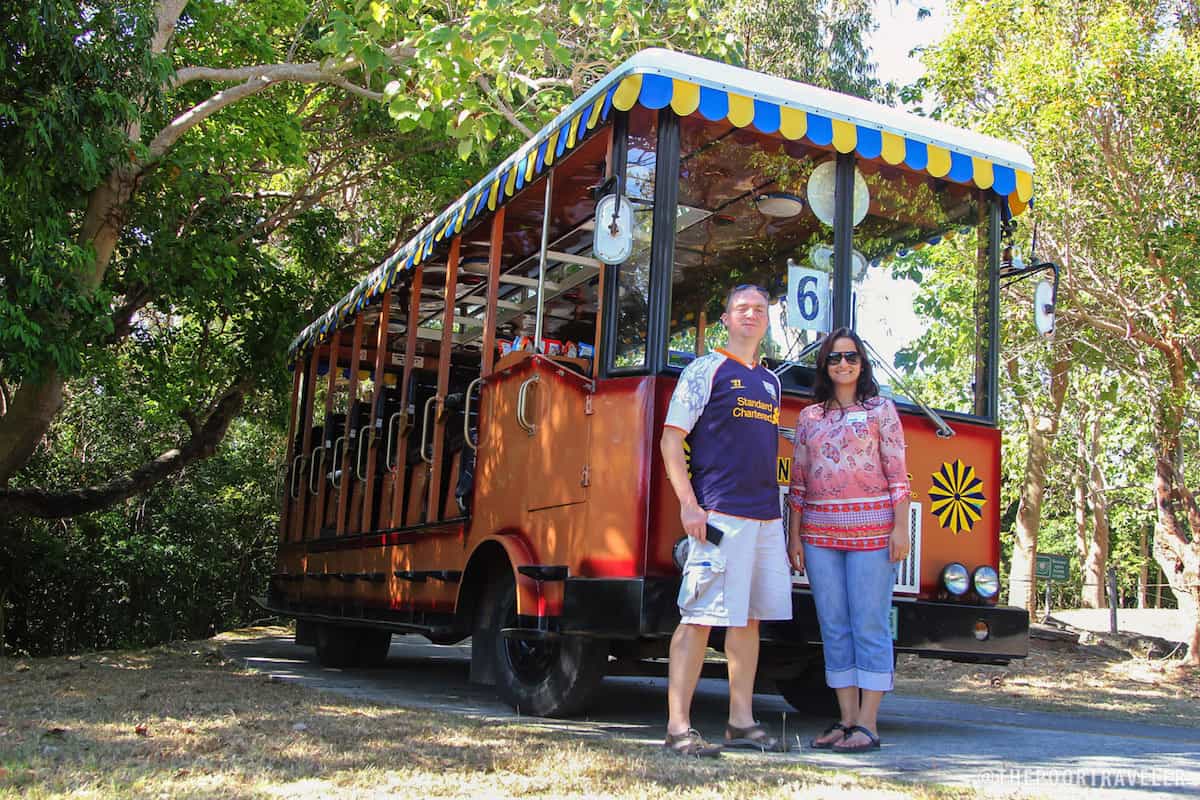
I have lived in Manila for almost a decade now, but I had never left footprints on Corregidor Island. It was one of those plans that I often overlooked because of proximity. (I always had an excuse along the lines of I-can-visit-it-anytime-anyway.) It just won’t happen. But with a friend constantly bugging me, it finally did.
Corregidor was officially called Fort Mills during the American era but was also commonly referred to as “The Rock” for its terrain and fortifications, and “Gibraltar of the East” for its resemblance to Mediterranean Sea’s peninsular fortress. Strategically located at the mouth of Manila Bay, it is the biggest of the heavily fortified islands that make up the harbor defenses of the capital.
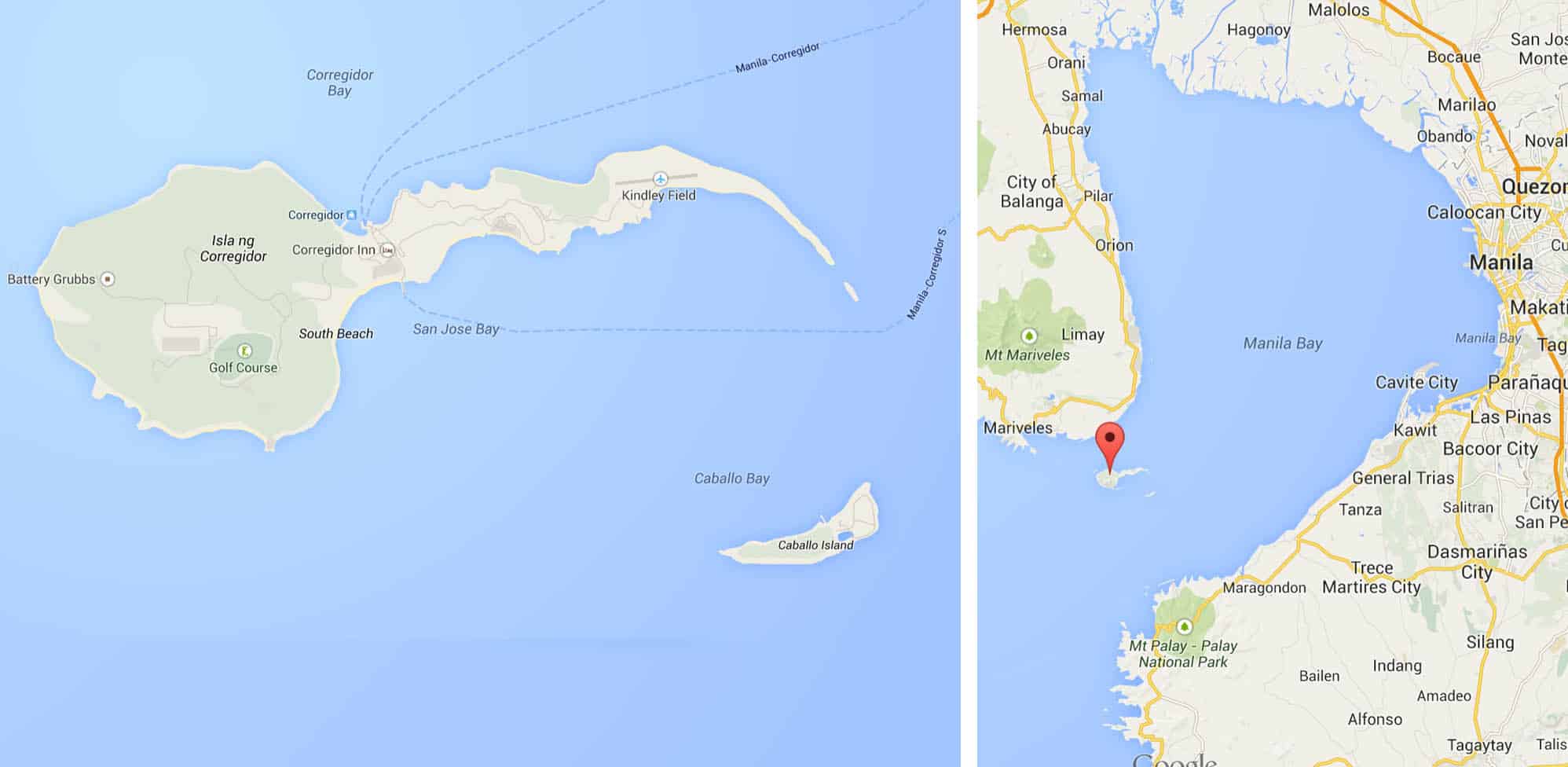
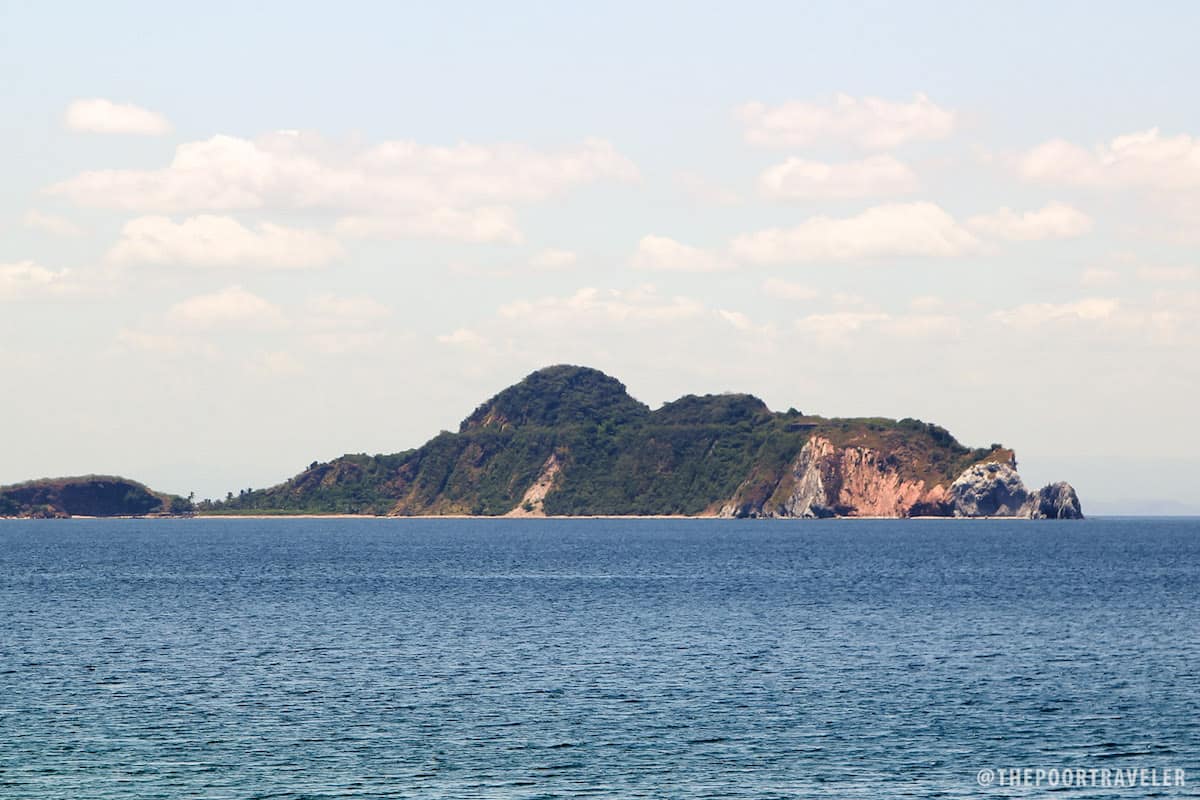
It played a pivotal role during the Pacific War, with its fall signaling Japanese victory and the start of their occupation of the Philippines (1942-45). We all know how horrible that turned out to be.
The most popular option (but not exactly the most budget-friendly) of exploring Corregidor is the day tour offered by Sun Cruises.
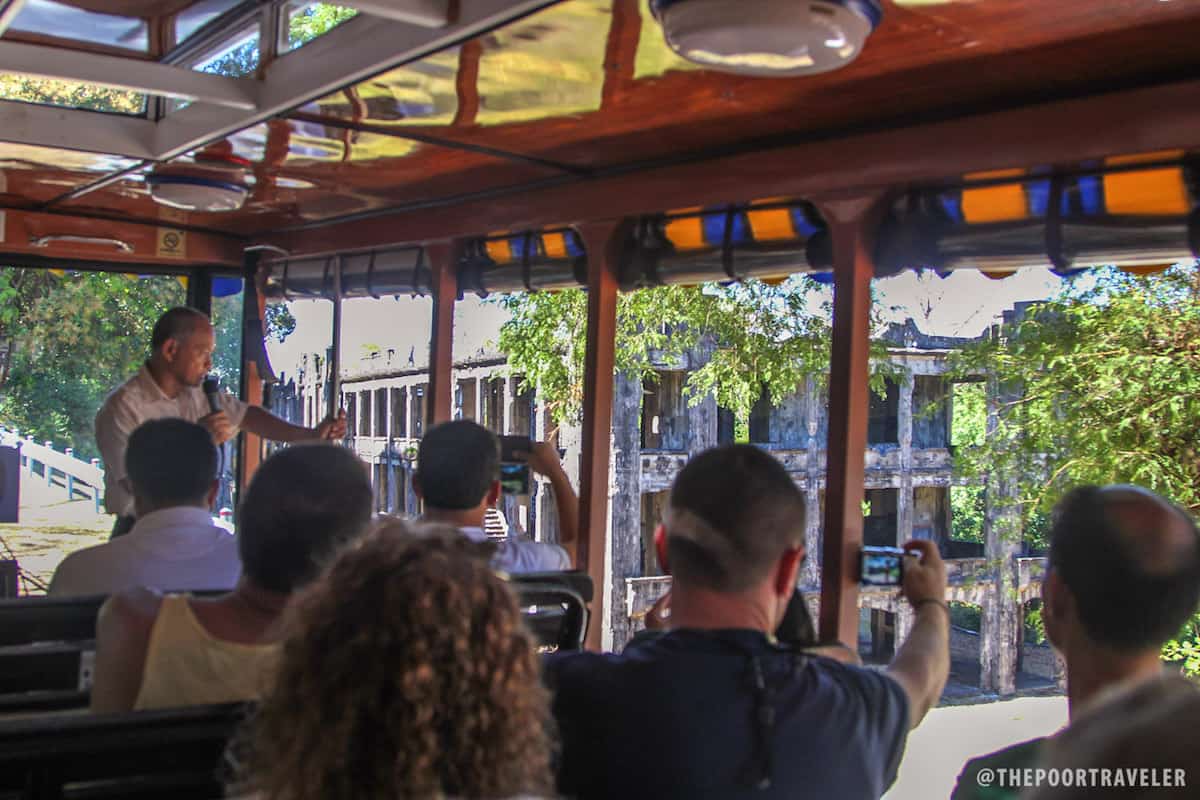
The Tour Package already includes ferry transfers, guide fees, buffet lunch, and the actual tour of the island. The tour lasts 9 hours (including the transfers) and usually starts at 7am at the docks at CCP Complex, Manila. The jetty is near Folk Arts Theater and Coconut Palace. Cost: PhP2250 (weekdays) and PhP2449 (weekends and holidays). Steep if you ask me, but it was worth it somehow. The tour ran smoothly and was very organized.
If you’ve always wanted to visit Corregidor but have no idea what to expect, let me give you a virtual tour of the island. Here are 10 stops that form the day tour.
Battery Way
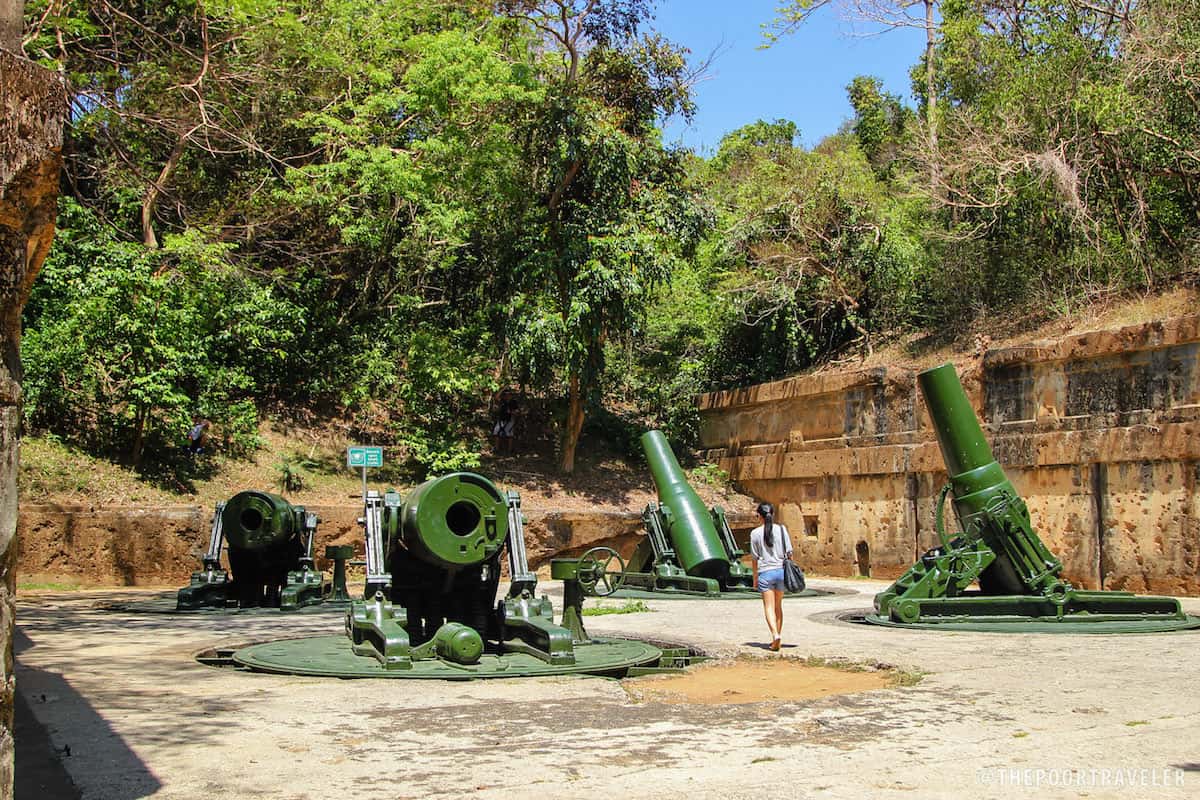
Your first stop is most likely Battery Way. It was named after 2nd Lieutenant Henry Way of the 4th US Artillery. This gun emplacement was built from 1904 to 1914. Four 12-inch mortars, capable of hurling from 45-70 degrees, sit in the middle of the site. It is one of the only two mortar batteries in Corregidor.
Battery Hearn
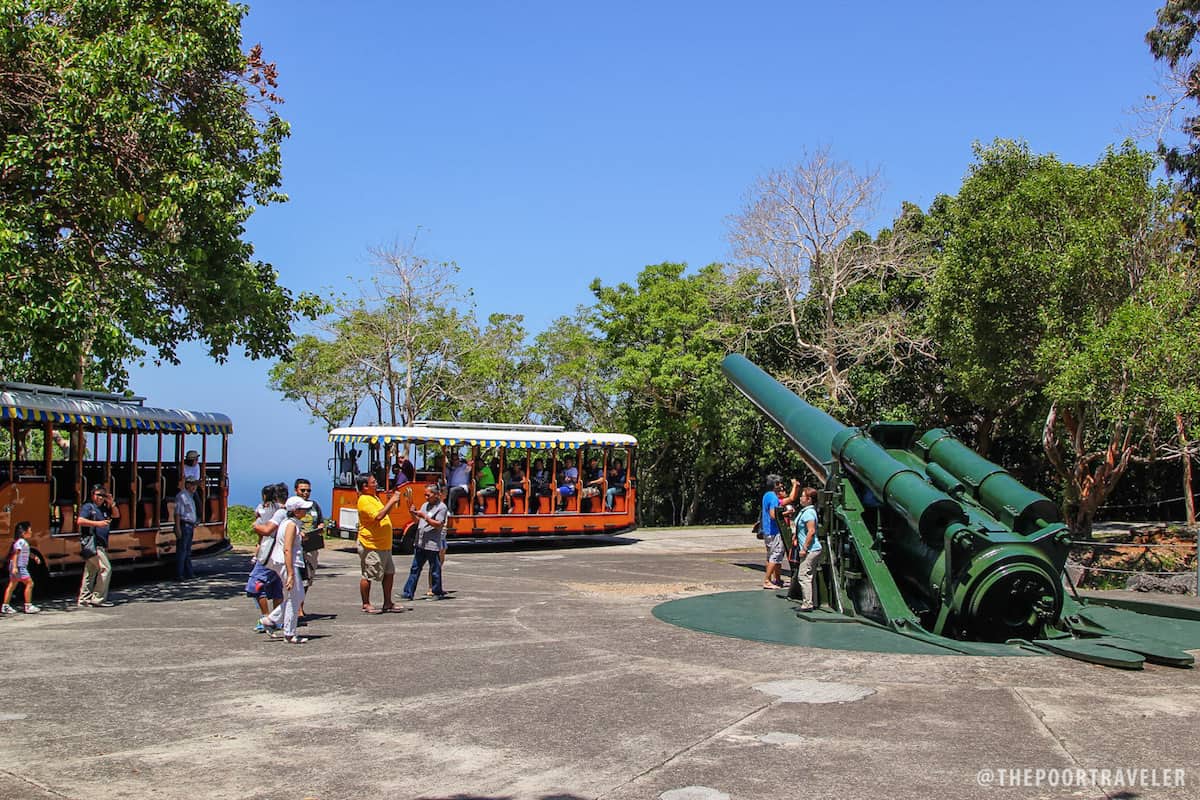
If my memory serves me right, the gun at Battery Hearn is the largest on the island. “At firing elevation between 15 and 25 degrees, the gun could cover the full 360-degree field,” brags the site marker. “On May 6, 1942, the gun and carriage were disabled by the crew before surrendering, but the Japanese had American POW’s place the battery back in service.” Today the gun bobs beside a crater, left when the US dropped a bomb here in January 1945.
Mile-Long Barracks
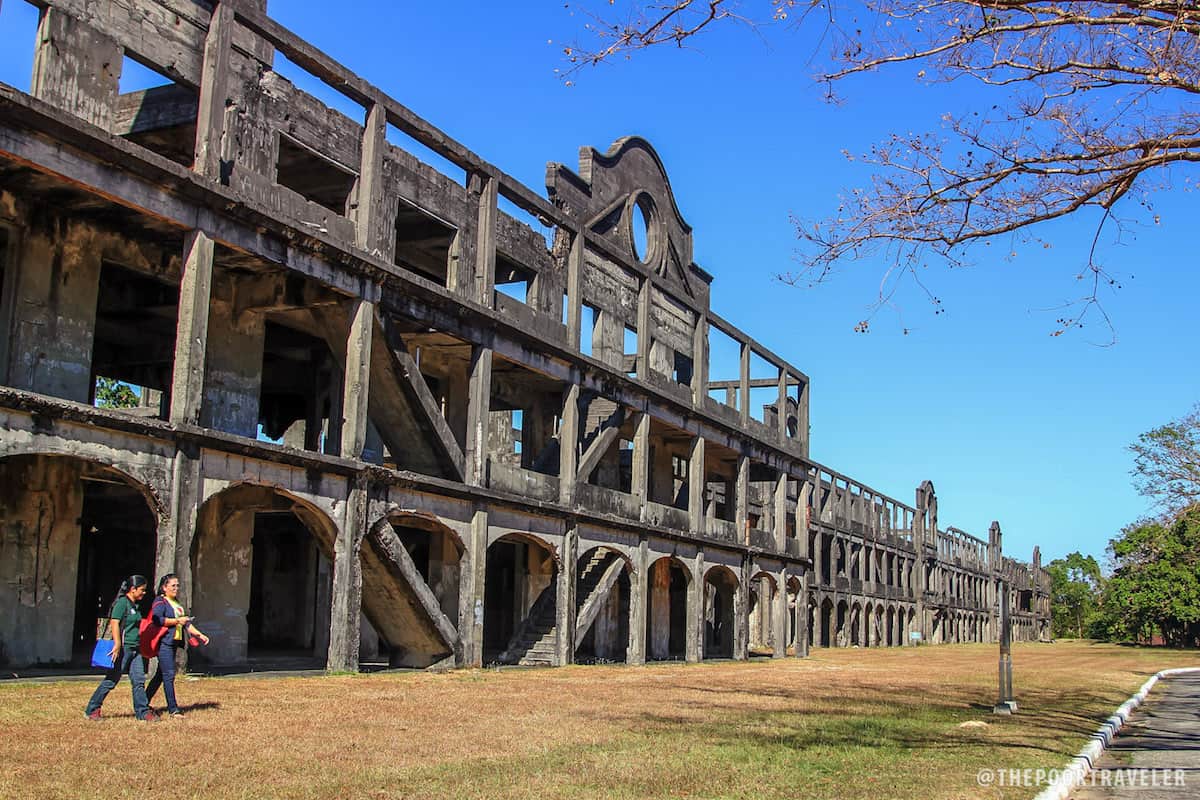
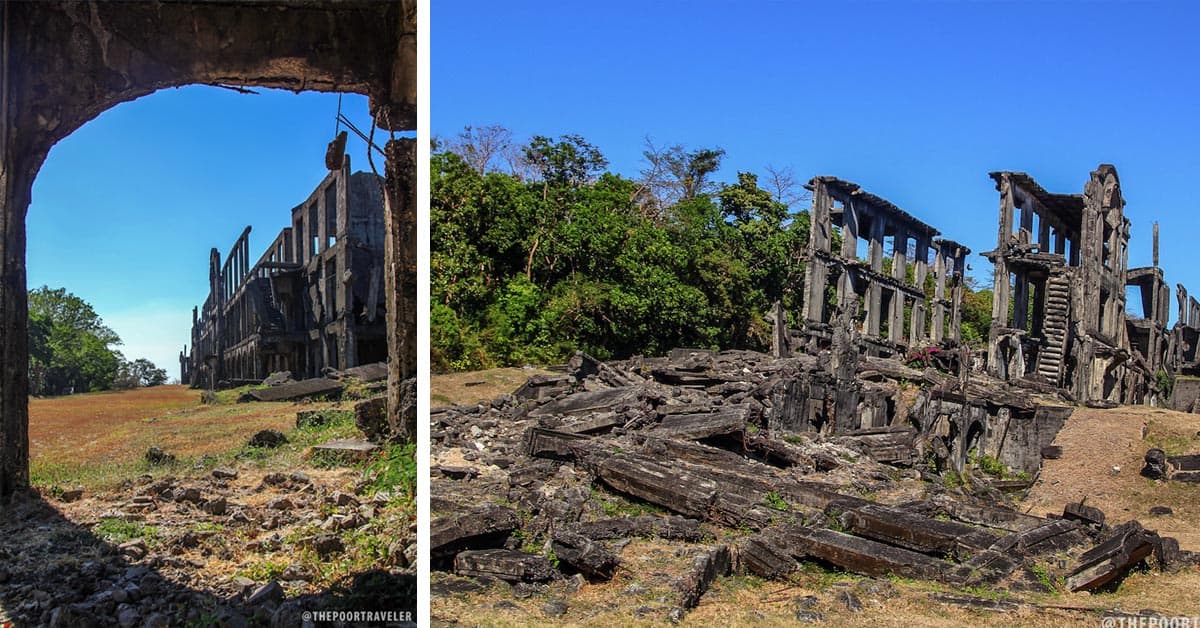
The skeletal ruins of the Topside Barracks have become the most iconic landmark of the island. It used to house the quarters of American officers and enlisted personnel. The structure is also called Mile-Long Barracks even though it spans only 1520 feet, less than a third of a mile. According to our guide, however, if you walk from end to end on all three stories of the building, you will be covering almost a mile.
Pacific War Memorial
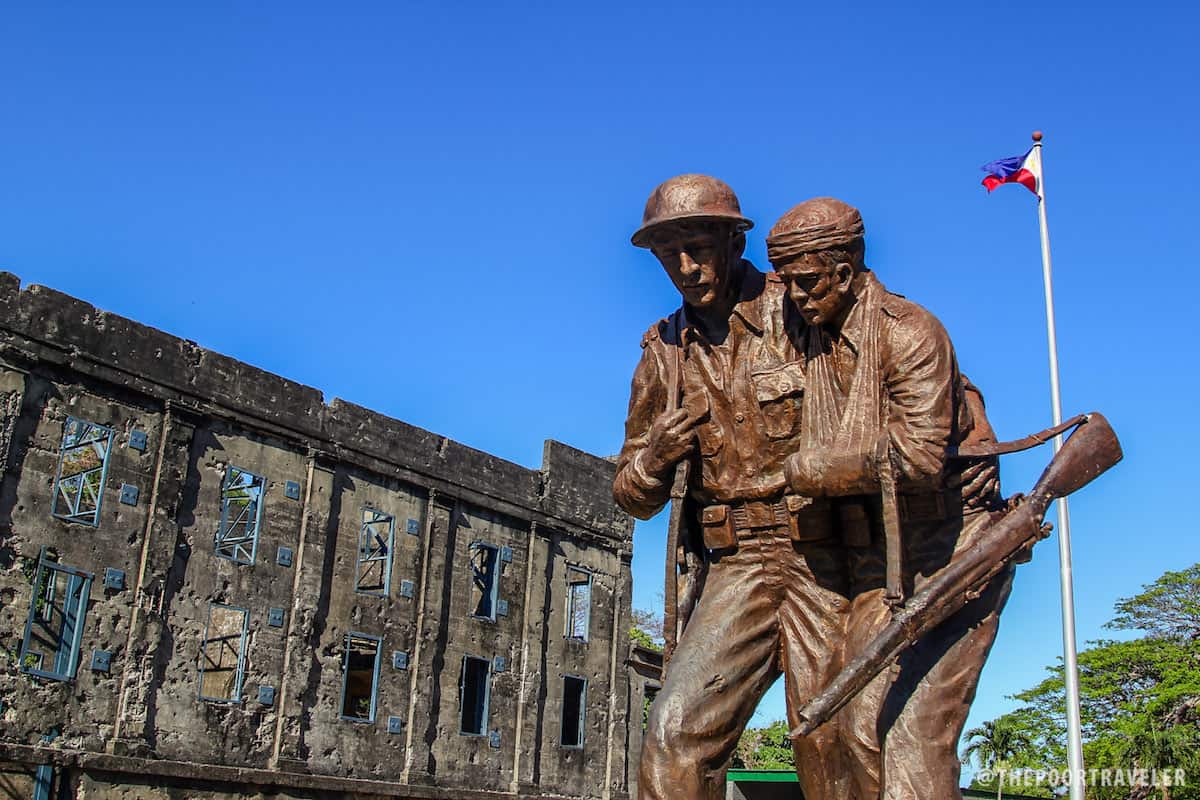
Perched on the island’s highest point is the Pacific War Memorial Complex. It harbors a museum, a circular altar under a memorial dome, and the Eternal Flame of Freedom Monument, all built in honor of Filipino and American soldiers who served during World War II. The site was completed in 1968 to the tune of USD 3 Million.
Also part of the complex are Cine Corregidor, the island’s movie house, and a small park behind the flame monument, which allows a fantastic view of the island’s tail end.
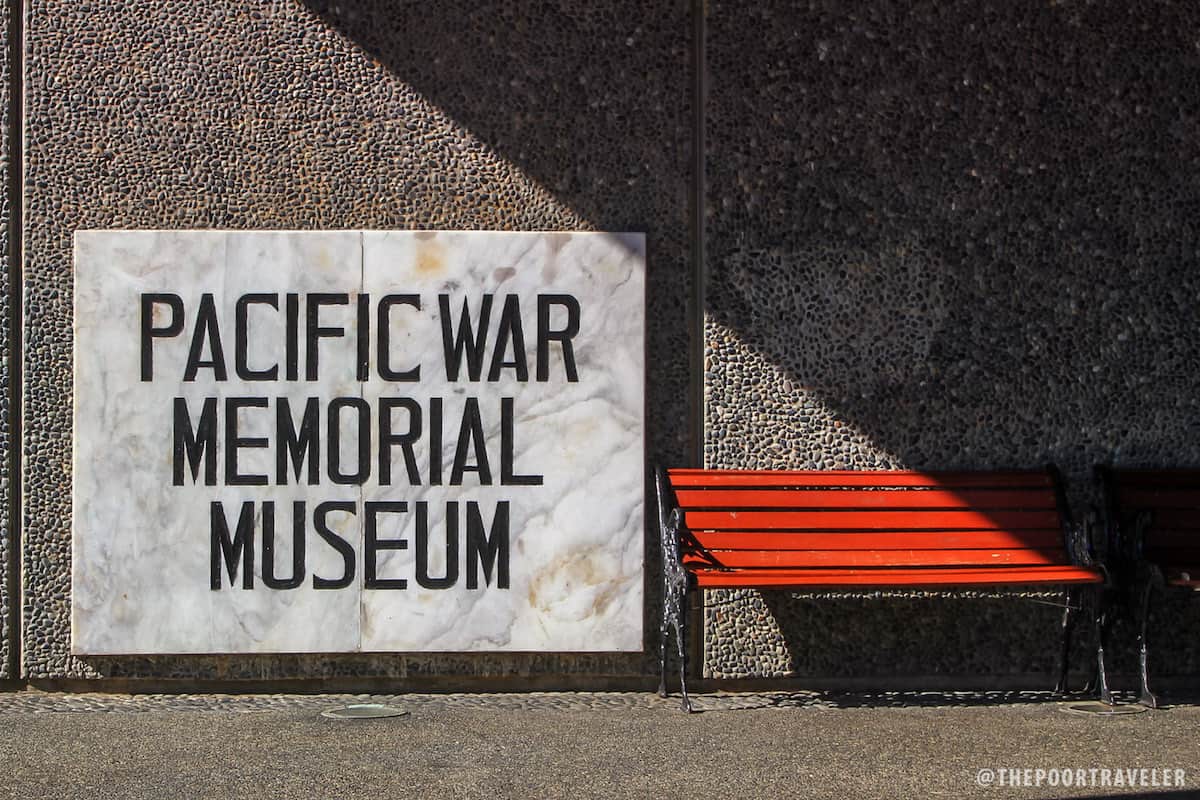
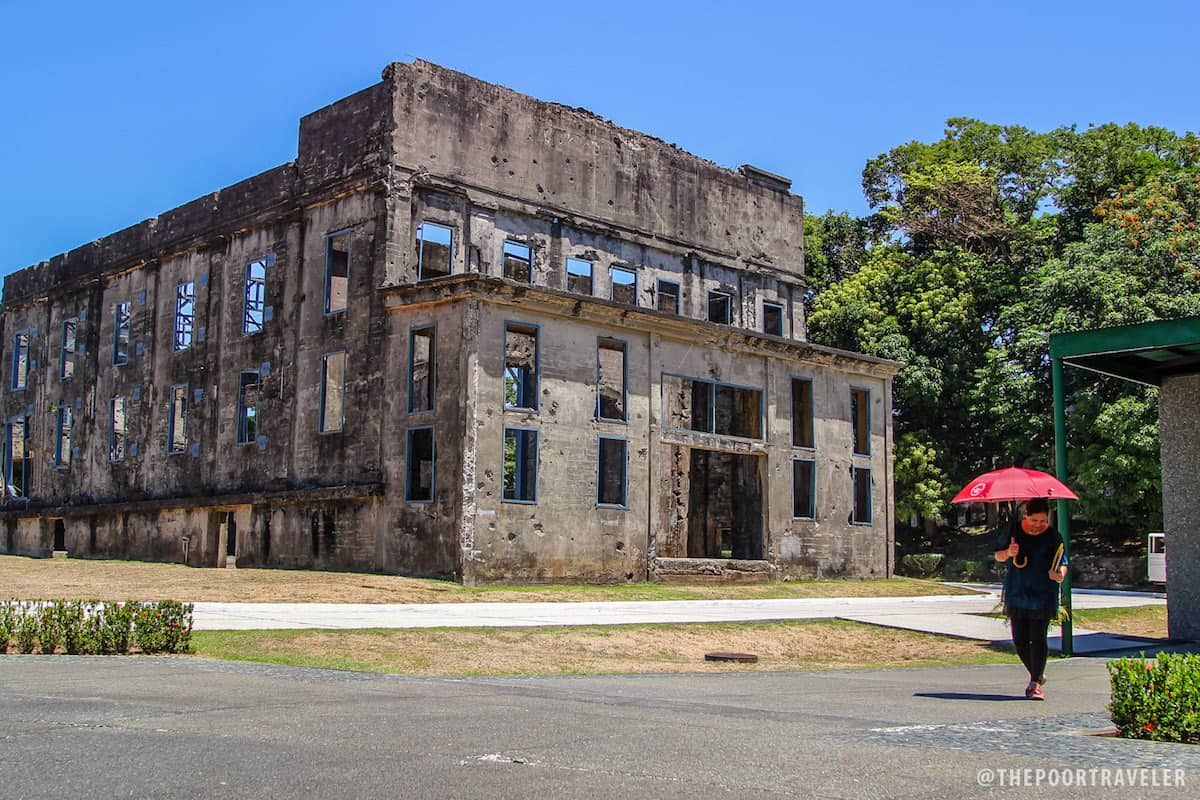
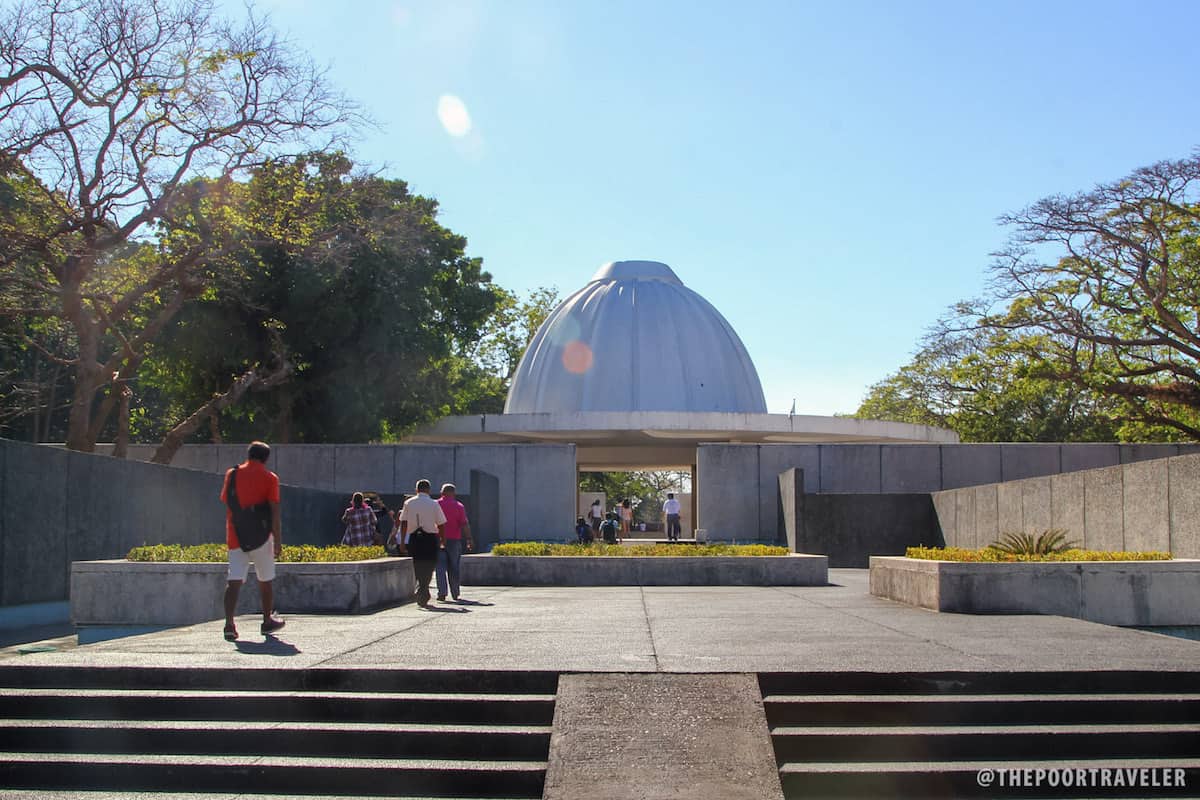
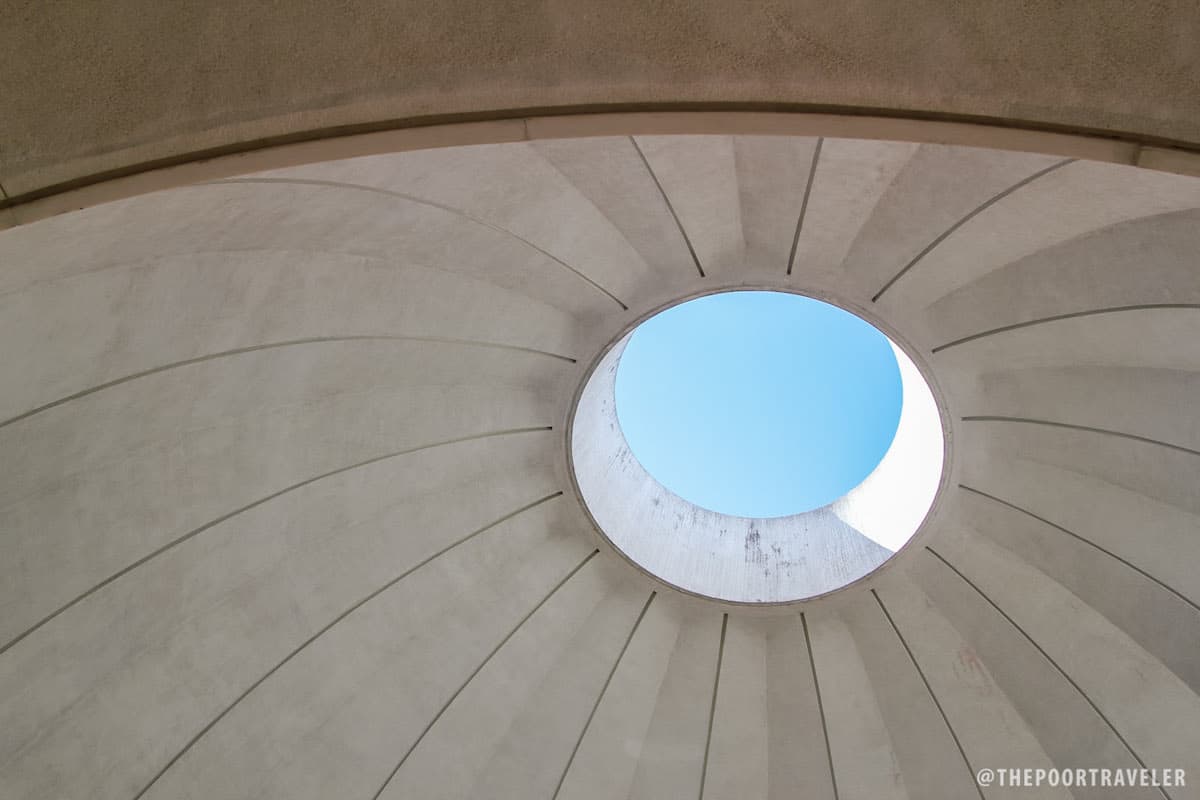
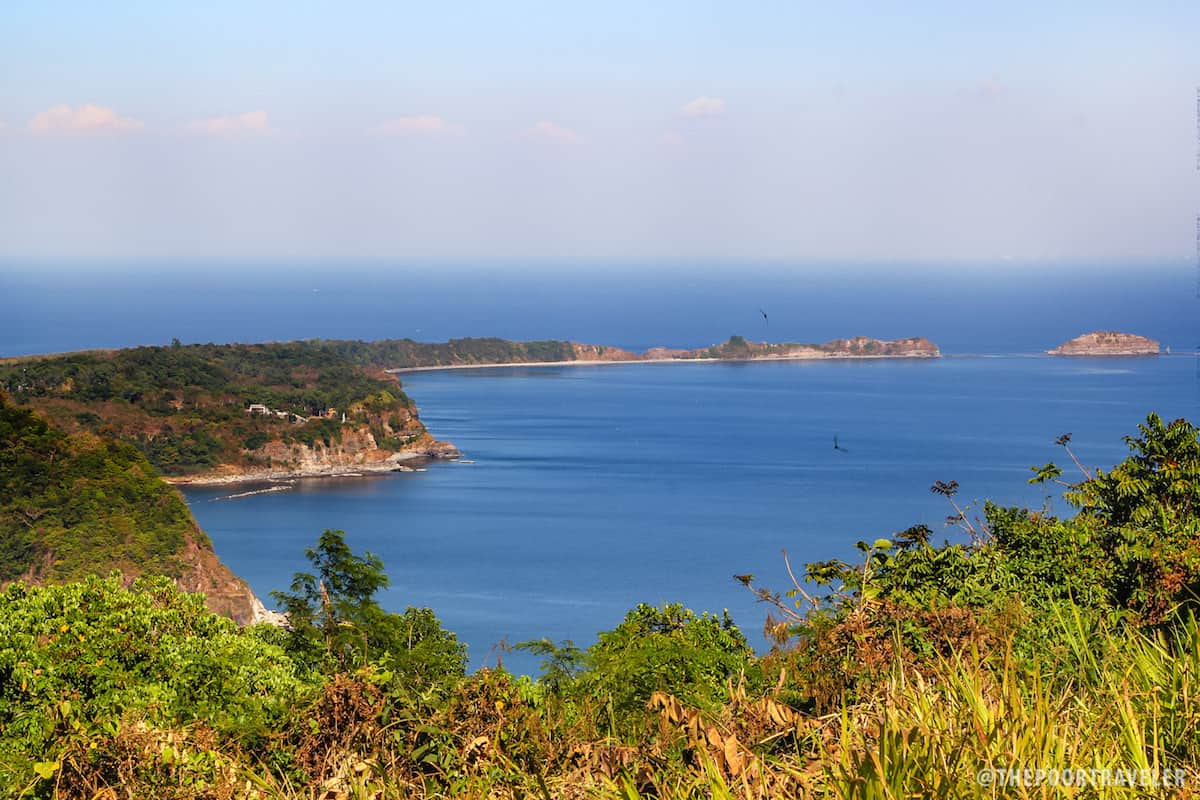
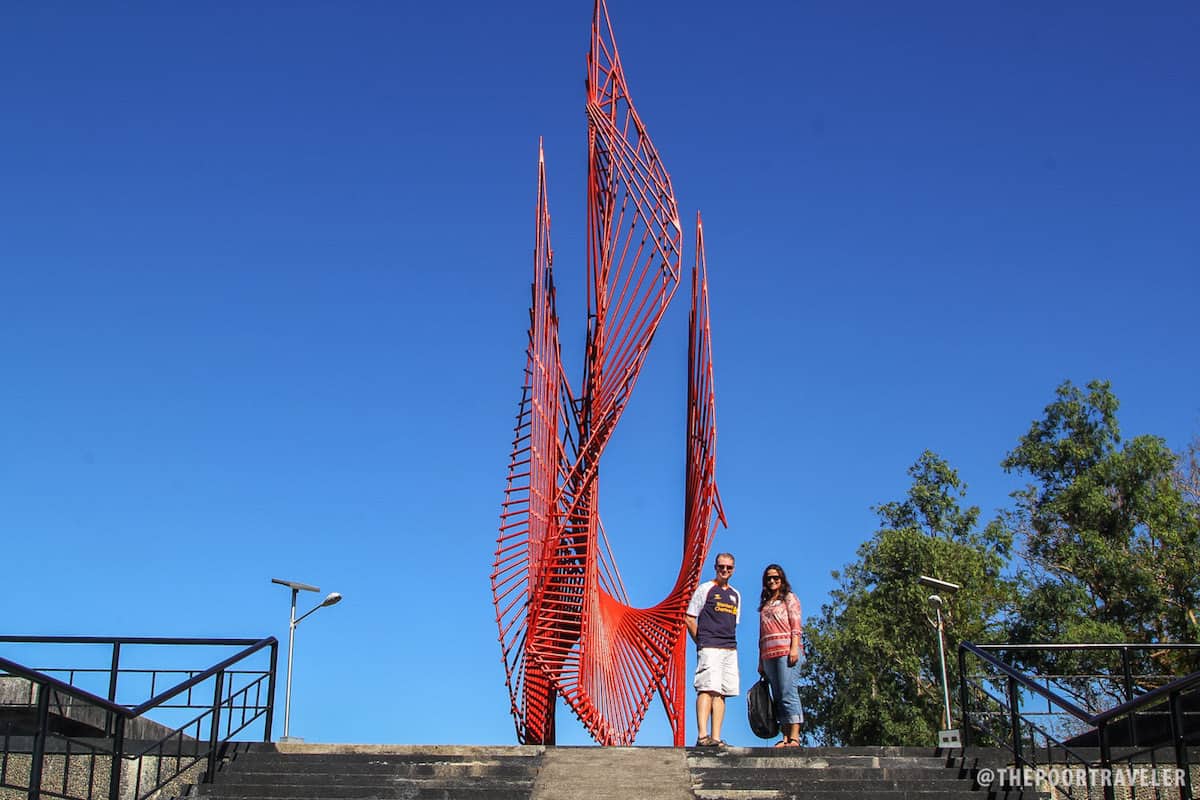
Corregidor Lighthouse
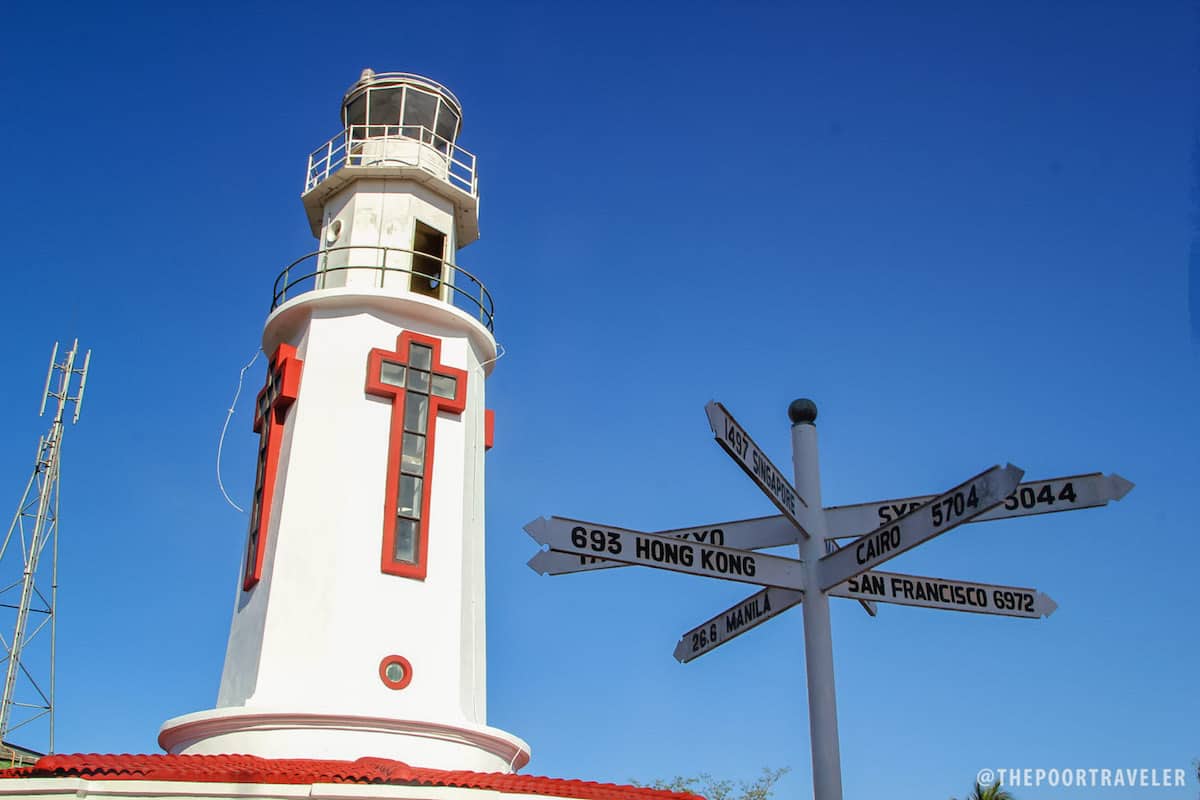
First lit in 1853, it is one of the oldest structures on the island. The Siege of Corregidor left it damaged, but it was reconstructed in the 1950s. Souvenir shops and small stars flank the walkway leading to the main tower.
Battery Geary
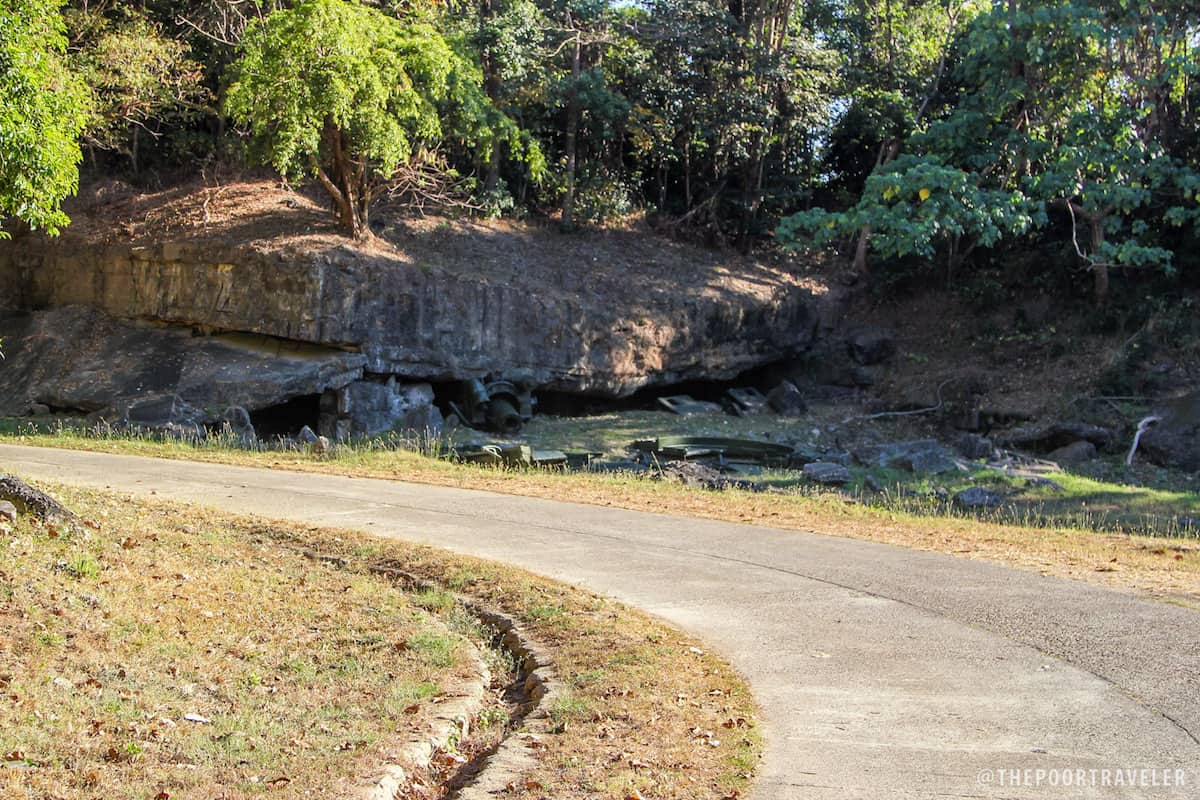
Completed in 1911, this gun emplacement was named after Capt. Woodbridge Geary of the 13th US Infantry. According to CorregidorIsland.com, “The eight 12-inch mortars of this battery were considered the most effective anti-personnel weapon in Corregidor. The battery had two mortar pits with 3 magazines and its standard crew consisted of 4 men per mortar.”
Battery Crocket
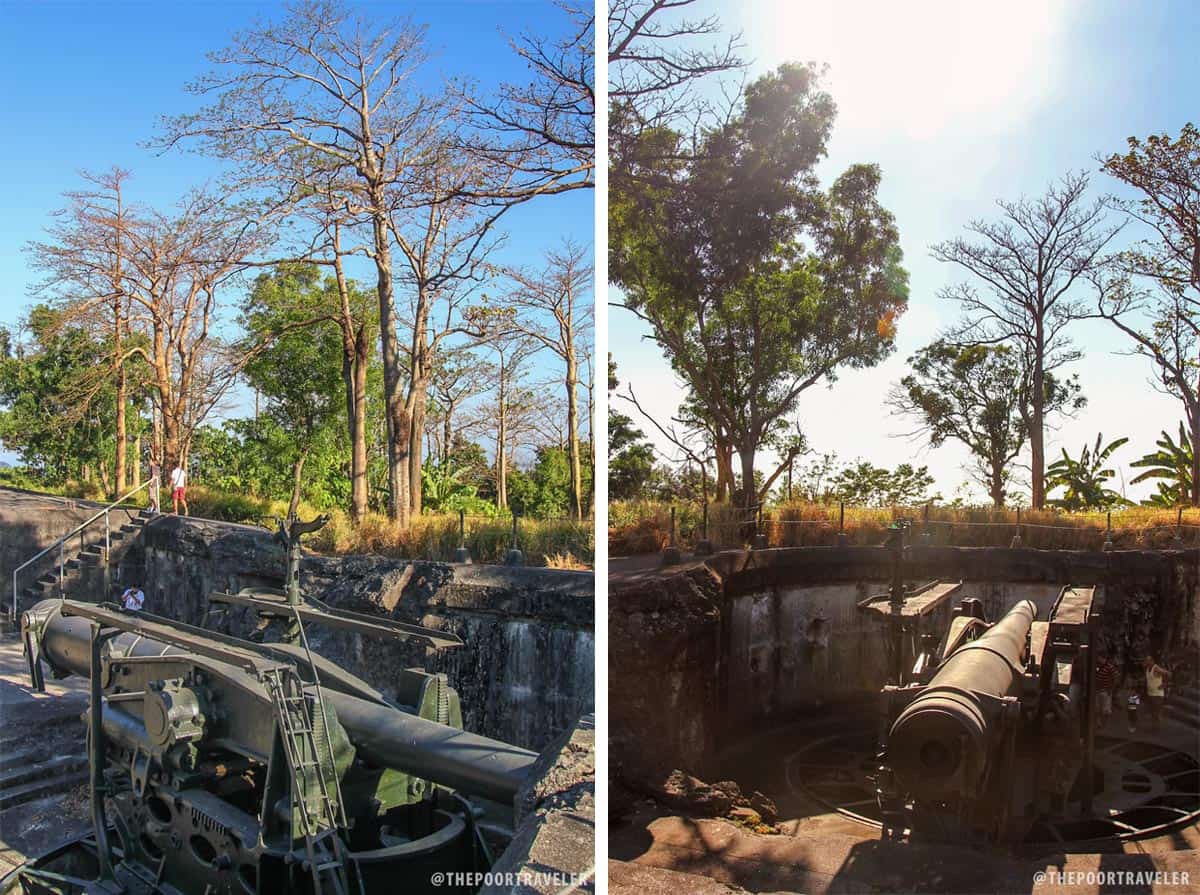
Battery Crocket is one of the six emplacements with disappearing guns on the island. These 12-inch guns were said to have 360-degree traverse (other sources say only 220-degree coverage) and required no smaller than a 30-man crew to properly function.
MacArthur Statue
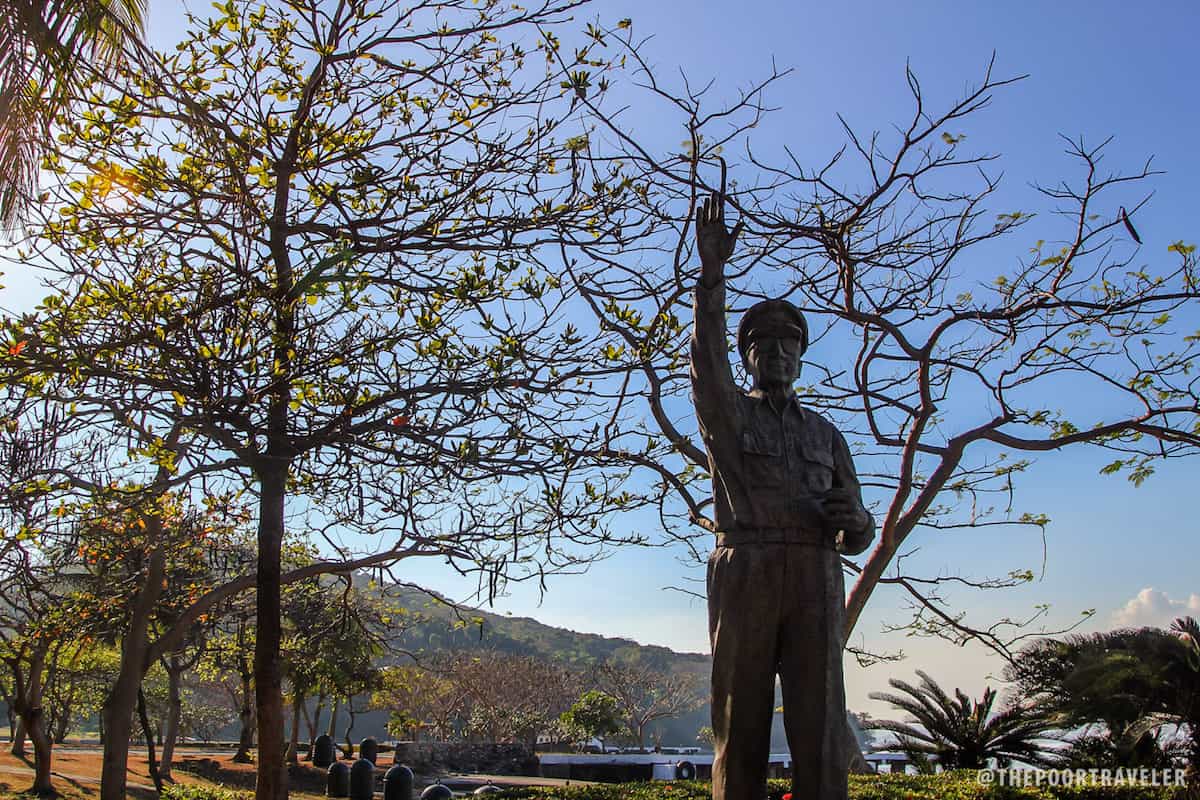
One of the most prominent figures during the war, General Douglas MacArthur was stationed in Corregidor and used it as Allied Headquarters until March 11, 1942. A statue in honor of him stands by the Lorcha Dock, MacArthur’s departure point for Australia. Many think this was where he uttered the unforgettable line, “I shall return.” Truth is, he actually said it when he was already in Adelaide, Australia.
Japanese Garden of Peace
A memorial to the Japanese soldiers who fought in Corregidor during the war and a prayer area to their kin, the Japanese Garden of Peace cradles a Shinto Shrine and a 10-ft tall stone statue of Buddha, which faces the direction of Japan.
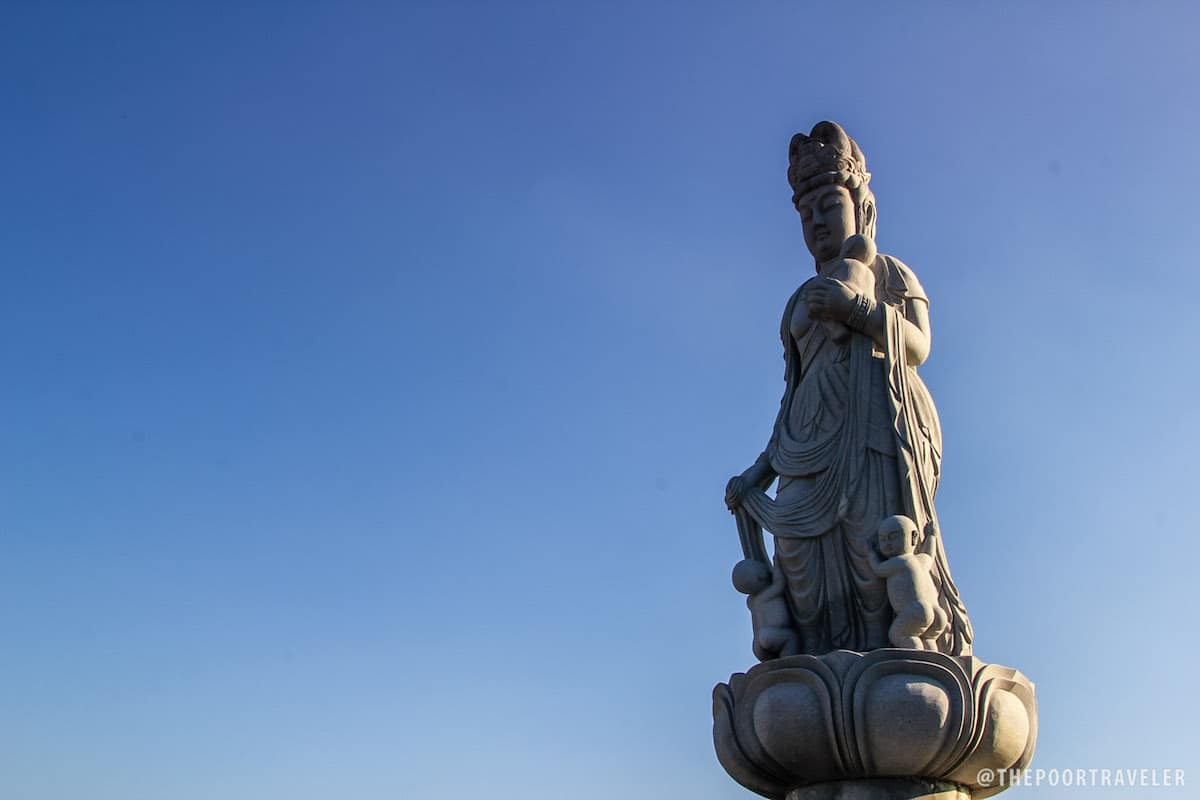
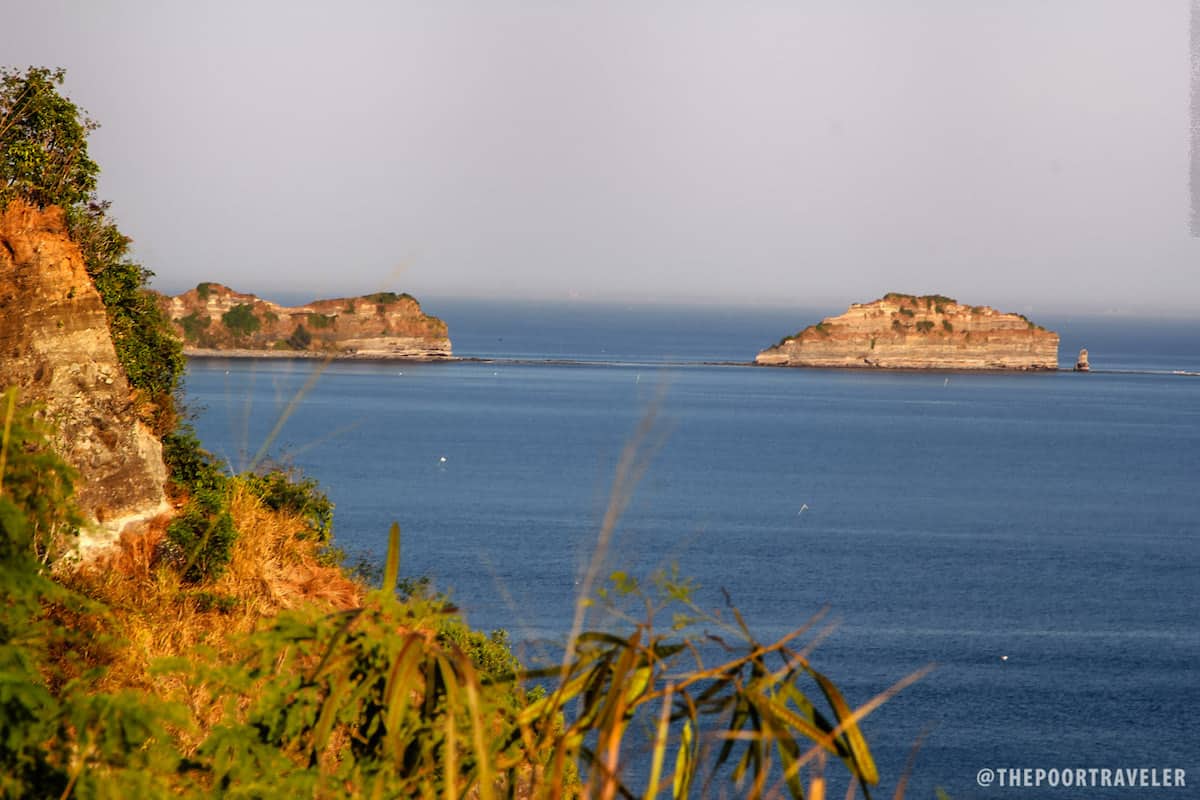
Filipino Heroes Memorial
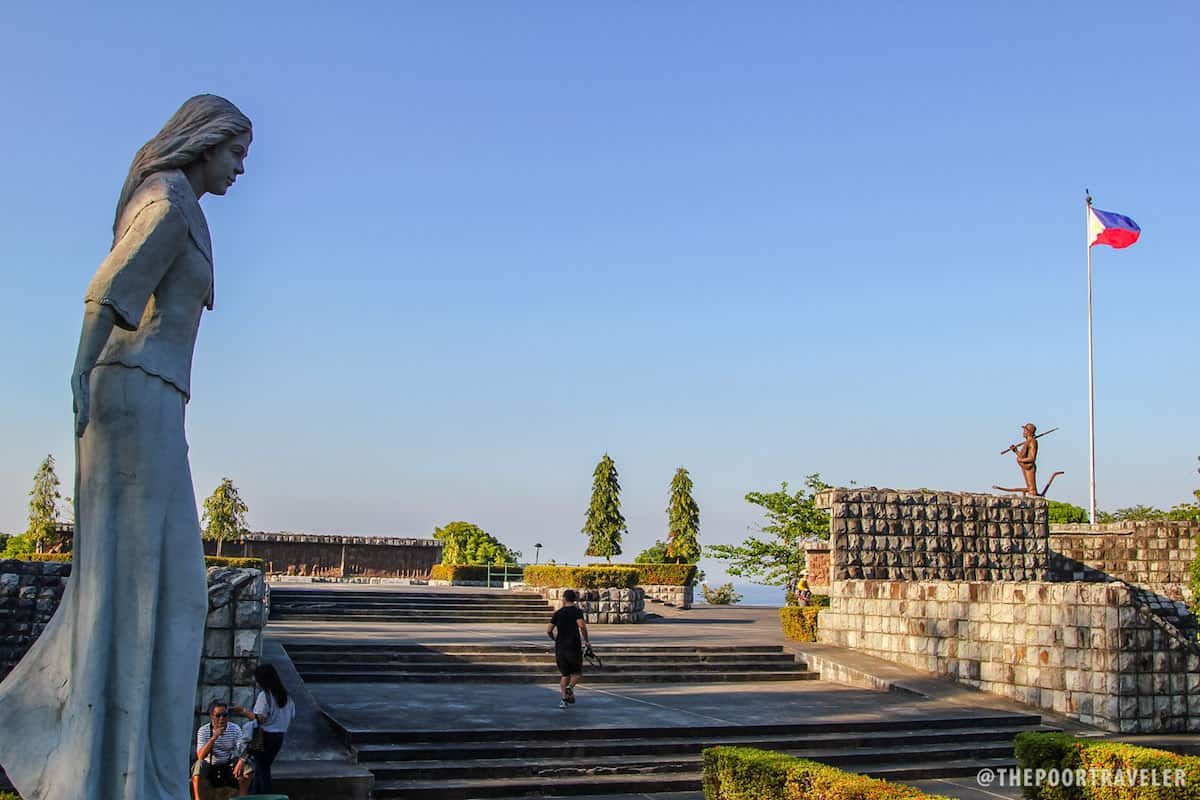
Also on the tail end of the island is the Filipino Heroes Memorial, a 6000-square meter site designed by Francisco Mañosa. The main attractions here are the 14 Manual Casas-sculpted murals that depict the battles of Filipinos.
Malinta Tunnel
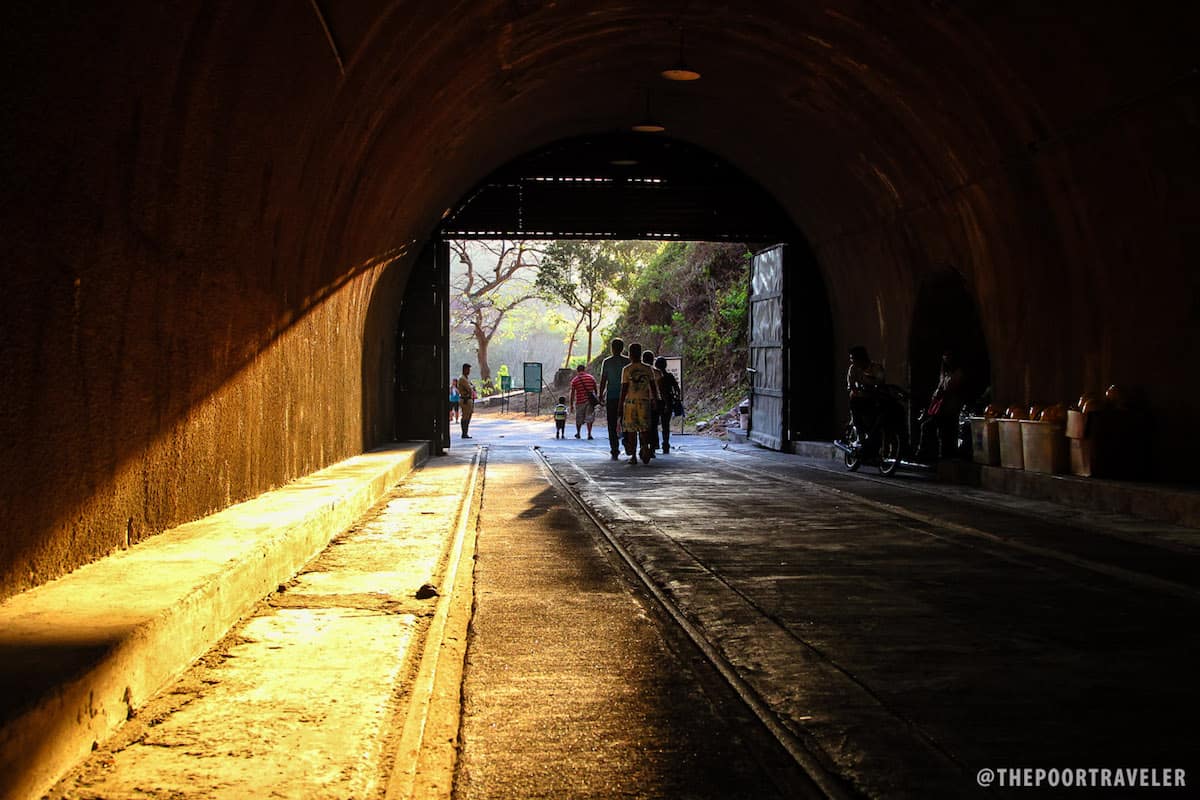
“The name Malinta came from the word ‘linta,’ meaning leech,” our tour guide explained. “When they were digging through the mountain to build the tunnel, they found a lot of these blood sucking worms along the way.”
Malinta Tunnel took 10 years to complete (1922-1932), an effort that proved useful during the war as it became the last stronghold of the military operations before the Japanese occupation. An elaborate network of tunnels run through the mountain, sheltering many of the soldiers during the war.
Today, its main tunnel is the theater for the Lights and Sound show, an audio-visual presentation created by National Artist Lamberto Avellana. The show narrates the key events of the battle in Corregidor. (Additional P200 fee applies.)
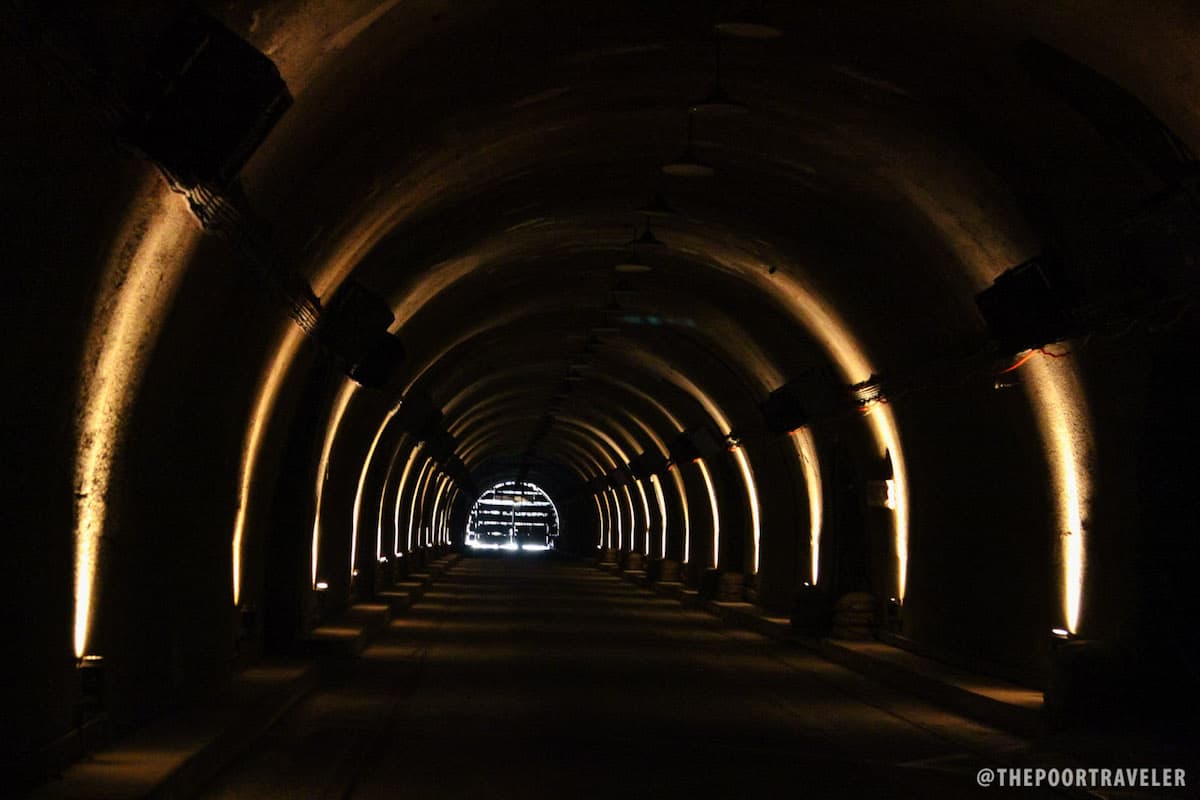
To be honest, the show was a bit underwhelming. For some reason, I was expecting a more dynamic, more interactive presentation, but it was segmented, outdated, and a bit dragging. (I returned to Corregidor months later and they said the Lights and Sounds show had been unavailable for weeks because of technical problems. I’m not sure if it’s operational again.)
Corregidor Hotel
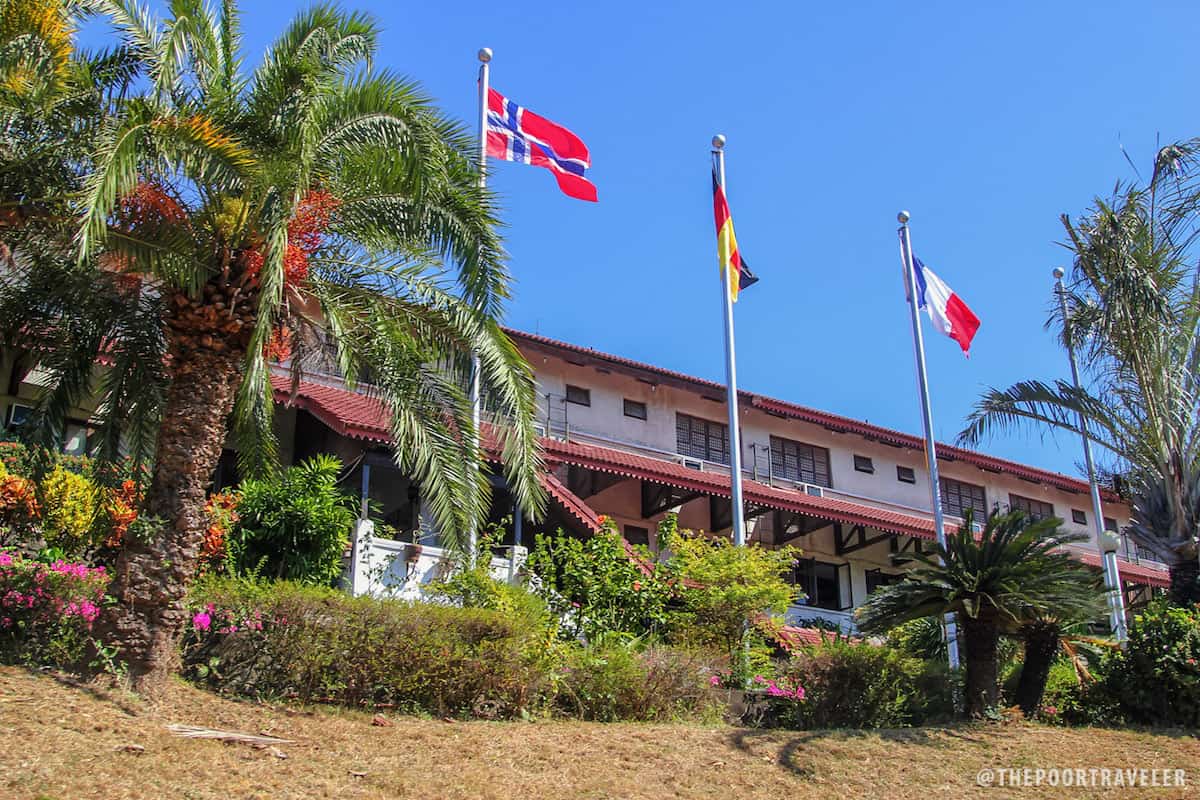
The lunch stop. Lunch was served at the La Playa Restaurant at Corregidor Hotel. The food was not bad, but not great either. There are three to four choices of dishes, paella, and some fruits for dessert (watermelons on the two occasions I was there). The hotel is situated along South Beach, but the break was too short for a swim. Or any beach-activity for that matter.
For overnight stays, visit: Corregidor Overnight Tour
Corregidor Day Tour by Sun Cruises
Esplanade Seaside Terminal, Mall of Asia (MOA) Complex, Pasay City
Telephone No.: (632) 834-6857 to 58, (632) 831-8140
Email: corregidortours@suncruises.com.ph
Website: www.corregidorphilippines.comInclusions: Day tour, boat transfers, buffet lunch
Cost: PhP2350 (weekdays) and PhP2549 (weekends and holidays)How to get there: Take LRT 1 or MRT to EDSA-Taft. Ride a jeepney multicab bound for SM Mall of Asia. Alight at One Esplanade.
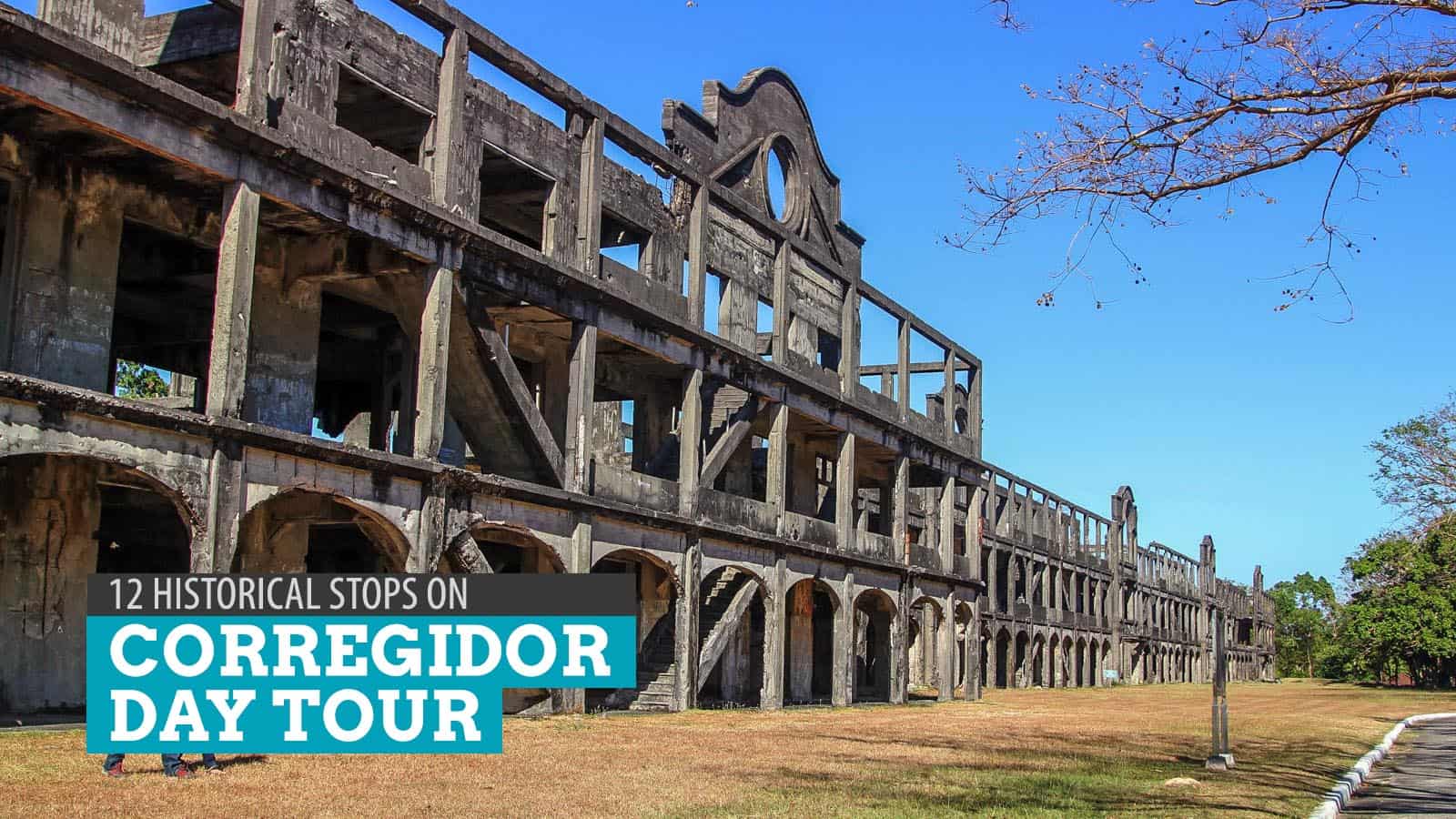























Been here few years back :))
I loved my visit to the Philippines and it has been many years now but my primary complaint was that leaving out of Manila had to be one of the most ridiculous displays of security I’d ever seen. After two security checks we literally walked down a corridor with no exits or entrances only to find another security stop. As if somebody might cut a whole through the roof and climb on down…nope, they have that scenario covered! It topped my list of “most security stops exiting a country” list. My recommendation after that was that if you go…plan on staying!
Lovely article. To those who plan on visiting the place‚ don’t be having second thoughts esp. if you’re in for the history feels—it’s very worth it. Twelve years have gone by swiftly since last stepping foot on Corregidor Island. It was a cloudy February morning‚ a pleasant day for sight-seeing with friends. It was not that high and so we tried climbing atop that old light-house. The show inside the Malinta Tunnel came as pretty enjoyable to me. I eerily felt being transported back in time as part of the war being fought in the island. PS: As a side-note‚ the ‘fertility buddha’ is not actually a buddha but rather‚ a bodhisattva (pre-buddha or on the path towards buddhahood). He is best known as Avalokitesvara or the bodhisattva of mercy and compassion. His female manifestation is a mother goddess known as Kuan Yin in China or in this case‚ Kannon‚ as she is known in Japan.
Amazing piece. I would love to visit these places with a good tour guide.
Wow. Very inviting and encouraging post for those planning to visit Corregidor (like me). I love the history of Corregidor and the feel of ancient heroism in the air. Nice new layout of the blog, too!
Just in case you want to visit Mt. Samat, Corregidor, Mt. Tarak, or have an appoint in Maritime Academy of Asia and the Pacific (MAAP) just visit my hotel / lodge at Alas asin, Mariveles, Bataan.
Hi what if were planning to go overnight? How much do u think it will cost and what are the budget friendly hotels nearby? Thanks
About the charge…is this per head . Any discount for a big group specialy any discounts for the seniors ?
Hi! Yep, this is per head. Nagtaas na ulit sila from the time we wrote this article. P2500-P2600 na.
No idea about discounts, but you may call them directly at (02) 465-8840.